 |
Site created 12/15/97.

page created: 6/9/09
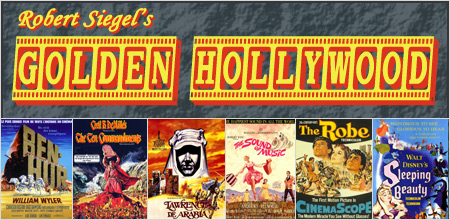 Robert Siegel - Main Page NOTE: The scans below are the property of Robert Siegel and The Digital Bits, and may not be reposted without permission. Copyright of the images belongs to the respective studios. In addition, please note that all the information contained within the text is taken from ORIGINAL studio press materials, which may contain some errors. |
||
|
||
Movies on Laserdisc was published on a very high quality gloss paper and it's a must-own for classic fans and anyone who enjoys the golden days of Hollywood. I have a limited amount of copies left and have decided to sell them. So if you're interested, check out Movies on Laserdisc.com to get a better look at what's inside the magazine and see how you can get your copy!
Golden Hollywood - Introduction Welcome! This week, we'll take a look at two films that center around music... Warner Brother's The Helen Morgan Story and Pete Kelly's Blues. The two films have recently been issued on DVD for the first time and the source material has been beautifully remastered. Both films are well worth your time and contain some excellent musical numbers. The films were both originally released at the beginning of the great Cinemascope and widescreen era. Jack Warner was soon on board with these two films and planned many such Cinemascope releases, including A Star is Born, East of Eden, Rebel Without a Cause and The Silver Chalice, among others. The fact that other studios were starting to support Fox's innovative projection and sound system was one of the major reasons that many theaters decided to equip their auditoriums with new screens and multi-speaker sound systems. This would be not only the advent of widescreen films but the breakout of 4-track magnetic stereophonic sound, and the studios made sure to take advantage of these features by releasing widescreen epics with their greatest stars and directors for these projects (for 70mm, 6 tracks were used). Warner Brothers would have to educate their stars and crews on Cinemascope, as it was a very different way to film a picture. Many of the directors were uncomfortable with the new framing. Some were even said to absolutely hate the process, until they were used to it and saw what could actually be done. They were leery of close-ups and had problems filling the wide frame - after all, there was much more room to fill on the sides. Warner Brothers also had to hire outside technical experts for sound mixing, so those experts could teach their entire sound department already on staff the ins-and-outs of 4 track stereo recording and mixing. It was truly the beginning of a new era in film, the most dramatic since the advent of sound, and necessary, as television was coming into more homes. Studios needed something to pull audiences back into their auditoriums. Our next column will be a special one, covering the spectacular release of South Pacific on Blu-ray Disc. Then, we'll have some fun with a few children's classics: Hey There It's Yogi Bear, Pufnstuf and The Man Called Flintstone, all three released theatrically. And also coming soon is an inside look at The Odd Couple to mark its anniversary edition and several other films included in the newly released Jack Lemmon Collection, as well as The King and Four Queens, The Singing Nun, Woodstock, Bombers B-52, Catlow, The Diary of Anne Frank and several films from The Natalie Wood Collection including Gypsy, Splendor in the Grass and Sex and the Single Girl. In the meantime, let the drapes part and let's take a look behind the scenes of The Helen Morgan Story and Pete Kelly's Blues. Rob Siegel Golden Hollywood The Helen Morgan Story Film appreciation by Robert Siegel of The Digital Bits Nightclub entertainers had no choice but to work in places owned by big time racketeers during the prohibition era, according to choreographer LeRoy Prinz, who staged the numbers for the recently-released The Helen Morgan Story (originally released to theaters in October of 1957) from Warner Home Video. "The booking mobsters owned all of the good gay spots," he said, "That provided an outlet for their product and they hired top entertainers to draw the crowds." Leroy first met Helen Morgan, the most scintillating of the torch singers, during the Jazz Age of the twenties, when she was in the chorus at Colisimo's in Chicago. Al Capone was the bouncer at the time, and was later to become the kingpin gangster. When Miss Morgan became a star in New York a few years later, LeRoy coached her in dance steps for Ziegfeld's Midnight Frolics. He gave her a filmy scarf to hold in her hand because she was so nervous. It became her trademark. The director of the film, Michael Curtiz, compared the Jazz Age period with today. "The only difference seems to be that we had Adult Delinquency. The film was a very hard project. We had to interview friends and family of Morgan, including Helen herself. She was a most fascinating person, and was so touched by the fact that Warner Brothers had decided to make a film about her starring Paul Newman." [Continued below...] |
||
 |
||
Directing The Helen Morgan Story took Curtiz back thirty years to the time when he first landed in New York from Europe. As a noted director in many countries abroad, he had wined and dined in exclusive cafes, so prohibition in America came as a surprise to him. He soon discovered that the dry law was being flouted in plush speakeasy cabarets and made it a point to study this interesting phase of the Roaring Twenties. He visited Helen Morgan's 54th Street place, Texas Guinan's, the club Richman and Belle Livingston's 58th Street Night Spot. There was also the Bath Club, Ciro's, the Club Durant, the Lido, the Cotton Club and the Sutton Club. Libby Holman, Jimmy Durante, Rudy Vallee, Duke Ellington and a host of lesser entertainers were packing in the thirsty, fun-seeking crowds. Curtiz was fascinated by the fact that some customers wore shoulder holsters, while others packed flasks on their hips. The pistol-carrying patrons were, of course, gangland members. Much of the color and atmosphere which he absorbed during these excursions was recaptured in The Helen Morgan Story, making the film even more authentic because it was directed by a man who actually lived these experiences.
[Continued below...] |
||
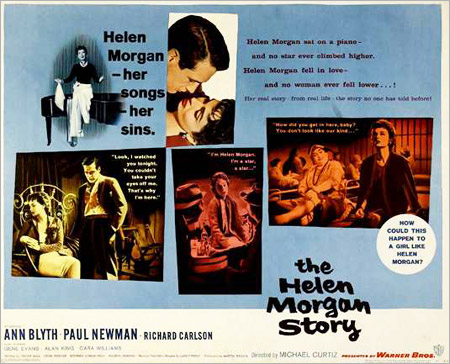
|
||
Helen Morgan was born Helen Riggins on August 2, 1900 in Illinois. Her father was a farmer and her mother was a schoolteacher. She changed her name to Morgan when her mother re-married. When that marriage failed, her mother packed her bags and took Helen to New York. Helen later went to Canada for the Miss Montreal contest but was disqualified when it was discovered she was an American citizen and not from Canada at all. She then went on to take voice training and started singing in the tackier speakeasies in New York. But she would be noticed and eventually developed a special look with scarf in hand and sitting on the piano - her signature. This began in a club owned by Billy Rose. It was gangsters who tried to help Miss Morgan's career and because of that, Prohibition agents kept a close eye on her, cutting off her chances at nearly every turn. She was then introduced to Florenz Ziegfeld and went on to perform in his Follies in their last year, 1931. She would then take the role of Julie LaVerne in the original Broadway production of Kern and Hammerstein's Show Boat and would later star in the revival. In 1929 and 1936 she would be seen in the film productions as well. Sadly, she began to drink heavily and this made her stage career very short, but not before starring in her second Broadway show, Sweet Adeline in 1929. She would revive her career in 1941, thanks to the help of her manager, Lloyd Johnson, but by then it was too late. What actually killed her was cirrhosis of the liver, at the young age of 41. She had been married three times, the last marriage taking place only months before her death.
[Continued below...] |
||
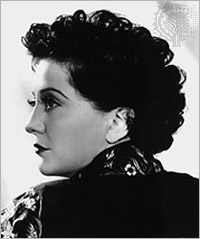  The real Helen Morgan. |
||
Success is not enough, in the opinion of petite and beautiful screen star Ann Bluth, who takes the lead in Warner's The Helen Morgan Story. "The important thing," she would comment on the set, "is to find a role that gives one a satisfying feeling of achievement. To know that you have brought a different characterization to life is the accomplishment I have longed for over a period of years." Ann said she reached this achievement as the exotic, emotion-wrenched songstress of the Jazz Age in The Helen Morgan Story. She plays the title role in the drama, flanked by a galaxy of talent including Paul Newman, Richard Carlson, Gene Evans and Alan King. Director Michael Curtiz and
producer Martin Rackin, who were dubious at first that she was the right girl for the part, were later loudest in praise of her performance. They said she was embarking upon a new and more brilliant career. Miss Blyth had won countless fans as a dramatic and music star in such successful films as The Great Caruso, Rose Marie, The Student Prince and Kismet. She had displayed her ability in these films, but it had almost been forgotten that she was capable of the tremendous depth and power she revealed as Joan Crawford's daughter in Mildred Pierce twelve years prior.
[Continued below...] |
||
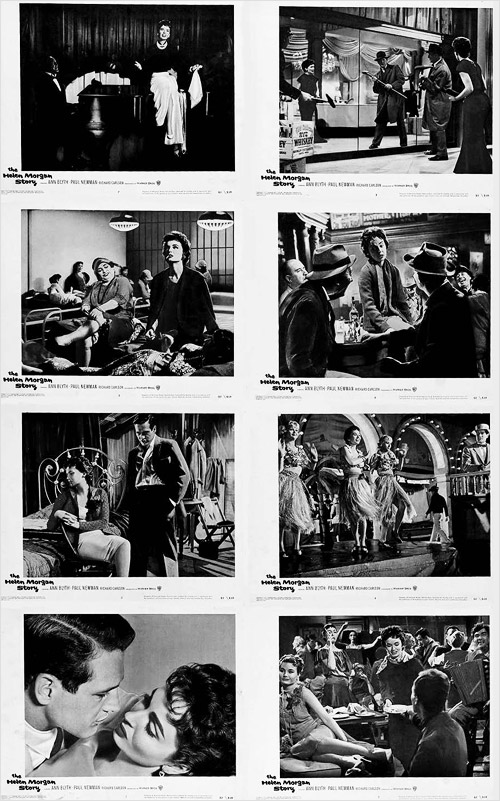 Original Lobby Cards for The Helen Morgan Story. |
||
Because of her many musical comedy roles, and because of her unaffected sweetness in private life, many persons had come to look upon Ann as merely a talented and lovely ingénue. Her vital and heart-moving performance in The Helen Morgan Story changed all of that. Those who watched the picture being made were amazed and enthralled at Miss Blyth's tremendous enactment of the fabulous torch singer, whose life was a mixture of triumph and tragedy during the riotous night club era of the Roaring Twenties. Two score feminine personalities were interviewed for the role before Ann was tested. The role had originally been planned for Doris Day (as evidenced by an ad seen in a 1950 Boxoffice magazine ad promoting the upcoming film), who refused it, probably because of the alcohol use. (Day was very careful about her screen reputation at the time.) Others that were considered or tested included Judy Garland, Susan Hayward, Jennifer Jones and Peggy Lee. Blyth's screen test, the last done for the role, ended all doubts. "I never wanted a particular role so much in my life," she said, "And I never worked so hard to make a part perfect. I did everything I could to submerge myself into the characterization of the real Helen. They tell me I have done well. All I know is that I tried-tried not for just success, but for an artist's real ambition-sincere achievement." Unfortunately, Ann Blyth, a trained singer, was judged too operatic for the singing in the role, so Gogi Grant, a pop singer at the time, was used for the musical numbers. Blyth would end up taking thirty falls from the
piano for her role, and thankfully, there was a doctor in her house -her husband, Dr. James McNulty, who helped heal her bruises.
[Continued below...] |
||
 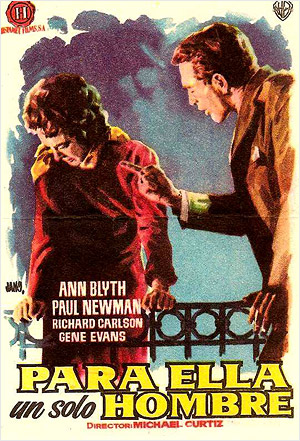 |
||
It wasn't all work behind the cameras. Paul Newman carefully prepared a gag that left voluble Curtiz, the director, speechless for the first time in his career. Newman told Curtiz he was going skiing over the weekend. Mike urged him to be careful and said that any injury would slow up the shooting schedule. On Monday morning, Newman showed up on the set with his arm in a sling, complaining bitterly about breaking it in a skiing accident. Curtiz turned pale and sat down heavily, unable to speak. Newman took pity on him and tore off the sling, ready for work. There was more fun to be had when during shooting, when one hundred cases of supposed liqueur - twelve hundred bottles - were smashed. Care had to be taken to see that none of the cast and crew were injured, but Blyth would later say that it was one of the best times she had on the set, and several remaining cases were used, after the scene was done, to celebrate. Curtiz took no chances with Alan King's penchant for taking brief naps after lunch, while filming scenes in a day coach in the Santa Fe railroad yards. He remembered that in another picture, the comedian fell asleep in a pullman which was switched to a point three miles away and King had to take a taxi back to the location site. So he requested Ann Blyth and Paul Newman to take turns keeping King awake. Newman would later say that this became harder than filming several of the scenes.
[Continued below...] |
||
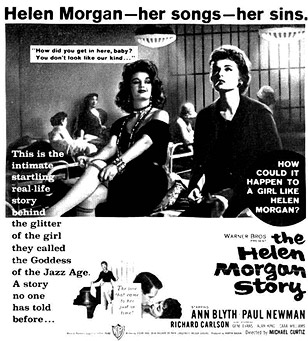  Original Warner Brothers advertising mats. |
||
Critical reviews upon release were varied, but most were positive. A.H. Weiler, who wrote for The New York Times, compared the film to an excellent soap opera but because of the fine music and the honest approach to the story, felt that the public would enjoy the movie. Variety Magazine, however, also called it a soap opera and nothing more, saying it was "about as heart warming as an electric pad." Warner Brothers executed a larger-than-average budget for the film. There were over seven album releases related to the film and several popular vocal artists would do songs from the film with the film's title on the album jacket. Musicians in all types of jazz and vocal clubs would soon be singing songs from the film, and Warner scheduled a special opening night party that was heavily publicized.
[Continued below...] |
||
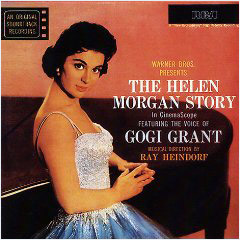 
Over seven albums were released relating to the film. |
||
On a personal note, I rarely make specific film recommendations in these columns. In this case, however, having had the pleasure to watch The Helen Morgan Story, I can say without a doubt that this is a very fine classic film. Newman's performance is excellent but it's Ann Blyth that surpassed my expectations. I highly suggest viewing this movie, as it's a true gem. An interesting fact is that this was Warner Brothers' only black and white film in Cinemascope. The sound was probably produced in 4 track stereo, which would have been a real treat to hear because of all of the musical content of this film. Sadly, Jack
Warner, feeling that there was no more use for original master tapes, destroyed all of the stereo source material in his studio vault, keeping only mono masters. No known stereo sources are known to exist, though it's said that such material might survive in the private collections film enthusiasts. One can only hope they would be willing to contact the studio (releasing a DVD or Blu-ray version of a movie) and offer it back for all of us to enjoy. The Helen Morgan Story was released to critical acclaim and made money at the box office but did not become a real blockbuster for Warner Brothers. The only awards the film won would be third place as Top Female Musical Performance in the Laurel Awards. The Helen Morgan Story was reissued in 1957 on a double-feature bill with Johnny Trouble. [Continued below...] |
||
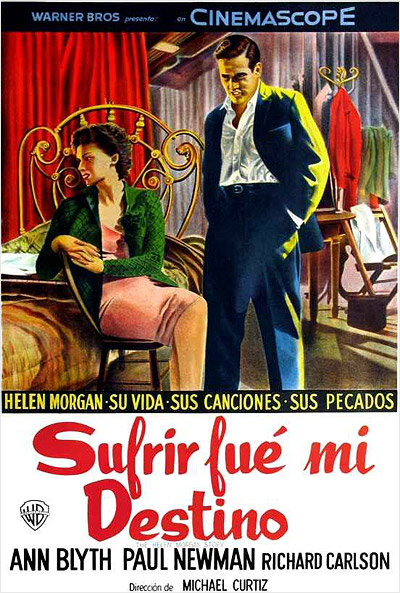 |
||
|
On to Page Two (Pete Kelly's Blues)...
 |
| Site
designed for 1024 x 768 resolution, using 16M colors and .gif 89a
animation. © 1997-2015 The Digital Bits, Inc., All Rights Reserved. billhunt@thedigitalbits.com |

